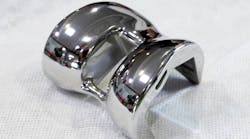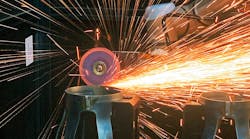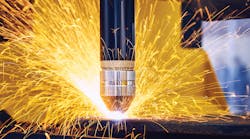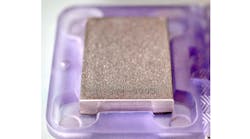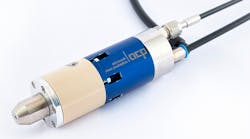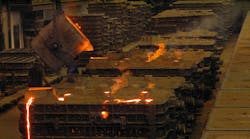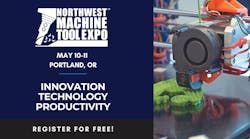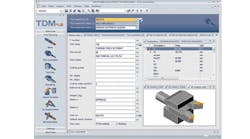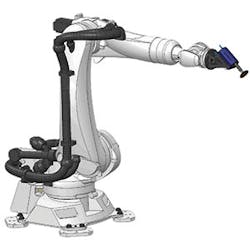There is no new trend of metalcasters embracing machining operations, either to create a separate source of revenue or to add value to their finished products. The latter reason is more common in recent years, especially among the larger, multi-operation foundry businesses, as they seek to fulfill the purchase demands of high-volume customers, like automakers or aircraft manufacturers.
For those operations, the full scope of machining businesses — sophisticated multi-axis CNC machines, CAM programming, automation systems, and so on — represent a separate landscape for capital investment. But, smaller foundries and diecasters, whose machining requirements may yet have advanced beyond finish grinding, may still find opportunities to improve or optimize their processes in the many different technologies emerging in the machining sector.
To begin with grinding, an automated system developed for an automaker may appeal to high- and medium-volume producers of precision or complex cast parts. The customer requested an individualized application that would allow it to replace hand grinding and polishing.
The solution developed by Deprag Industrial involved a stationary robot with customized end-of-arm tooling.
Deprag develops pneumatic grinders, polishers, files, drills, and multiple other industrial tools. The customer’s goal was to install two robots to replace six workers (two per shift), optimization grinding, eliminating health hazards, increasing productivity, and reducing error, with equal or reduced operating costs.
“The project definition was to replace grinding using handheld air tools with end-of-arm tooling, while also taking into consideration the irregularities of the surface in relation to the contact force,” explained Deprag’s Pavel Šilhán. “This contact pressure is not consistent for every component.”
New technologies make it possible for the contact force to react sensitively to varying surface profiles: they use a dedicated electronic controller that is independent from the robot’s controller. However, the customer wanted to manage without this additional controller, to reduce potential malfunctions and to avoid maintenance requirements.
Deprag developed a system using a stationary spindle with a technical specification suited to the relevant part-quality standards, based on the grinding material and work cell anticipated by the client. The spindle was set up to prevent any limitation on the robot’s freedom of movement. The adjustable spindle positioned in the clamping chuck is connected to a pneumatic cylinder that exerts a defined axial force on the grinding tool. Spindle overload can be adjusted in an external range of 1.0 to 6.3 bar. Using this method, the required contact pressure can be implemented sensitively, without using a regulation circuit.
3D specs for the grinding head were developed as part of a robotic simulation. At the same time, Deprag technicians determined the optimal contact pressure in relation to the grinding material, in order to achieve the targeted surface-quality criteria. At that point, a prototype of the stationary grinding head produced and successfully tested in real conditions at the customer’s plant.
Now in operation for the automaker, it proves that finish grinding can be automated, even for operations that call for a sensitive handling of complex parts and surface-critical materials.
One obstacle to metalcasters adding or expanding machining is managing the production records. Most CAD programs will have a simulation function: NCSimul Machine from Spring Technologies is one, and the NCdoc add-on function allows users to automatically document all elements of a machining process, thereby reducing errors and also improving communication within an organization.
NCdoc generates a full machining report with data sheets for tooling and setup characteristics, details of the machining process, operational instructions and checklist information, and dimensional inspection checks including nominal values and associated tolerances.
Because it performs in real time, the documentation lets users perform in-process checks. Clear presentation and easy access to accurate dimensional and operational information minimizes the possibility of errors resulting from misinterpretation or outdated data. Through the NCSimul Player Synchro feature, operators and others can access instructional and other data sheets at the machine in synchronization with the current machining cycle.
Users can edit documents with a click, and a smart wizard for datasheet editing has automated input and collection of machining simulation data, including 3D representations and cycle times and cutting conditions.
Machining processes are subject to constant updates, new releases, and changes: NCdoc provides full document lifecycle management. Data is accessible through a PC or touch tablets, and technical data sheets are available in PDF form or via the NCSimul Player feature.
Managing the inventory and materials of machining installation can be optimized, too. Software developer TDM Systems released a new version of its MachiningCloud TDM program (4.8) that it claims will transform tool data management in "tool lifecycle management." "On the shop floor, Tool Lifecycle Management is the key element of Industry 4.0," explained Peter Schneck, managing director. "Our software sits at the interface between planning and real world production."
The release includes functions for multi-tool support; data import from MachiningCloud; wireless connection for barcode scanners; at-a-glance CAM data for the operator; and the ability to generate solid models for tool assemblies faster and more easily.
Multi-functional tools have multiple cutting edges for different machining purposes. The new software version combines more tool assembly data records with the same bill of materials in a "multi-tool data record." When searching for tools, it is possible for users to see the search criteria corresponding to partial data records of a multi-tool displayed as well as the multi-tool data record.
For the internet-based tool database, MachiningCloud TDM V4.8 (hotfix 1) maps the import of tool data. This automatically assigns the ISO tool parameters from MachiningCloud to the TDM class/group structure parameters.
A metalcaster may or may not become a machine shop, but the technologies that make the best machine shops more competitive can make any grinding or finishing operation more efficient.

